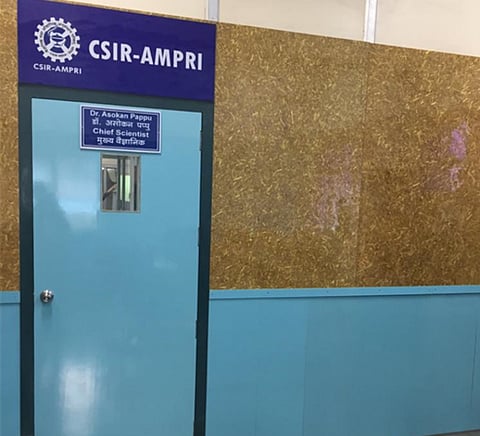How construction material derived from agro-waste can pave way for sustainable living
India generates 500 million tonnes of crop residue annually, according to the Union Ministry of New and Renewable Energy. Crop residue is typically used as fodder and fuel for domestic and industrial purposes. A surplus of 140 million tonnes, however, reportedly remains unattended, out of which 92 million tonnes is burnt each year.
Burning crop residue causes severe environmental hazards such as greenhouse gas emissions that contribute to global warming, increased particulate matter and smog that lead to health hazards and loss of biodiversity.
Crop residue burning significantly increases concentration of air pollutants such as that of carbon dioxide, carbon monoxide, ammonia and oxides of nitrogen, sulphur, volatile organic compounds and particulate matter (PM). Studies have speculated that these emissions can increase by 45 per cent in 2050 if existing practices continue.
Nearly 137.16 gigagrams (1 Gg = 1,000,000 kilograms) and 163.75 Gg of PM2.5 and PM10 were emitted from crop residue burning in Punjab, according to a study on district-wise detailed emission inventory in 2020. In Haryana, the concentration of PM2.5 and PM10 was found to be 56.95 Gg and 72.15 Gg respectively.
Thus far, most government interventions have mainly focused on energy production out of crop residue, particularly biogas production. But development of bio-composites using agricultural residues such as rice husks, stalks of most cereal crops, and coconut fibers is also gaining attention.
Natural fiber-reinforced composites have gained significant attention in the last few years for they are better than synthetic fibers: They are lightweight, have an improved surface finish of the composite parts, are cheap, biodegradable and have good mechanical properties.
The plant biomass primarily comprises cellulose, hemicellulose and lignin with smaller amounts of pectin, protein extractives, sugars and other extracts. Cellulose is the biomolecule that provides structural support to the bio-composite.
CSIR-Advanced materials and processes research institute (AMPRI), Bhopal, has developed a technology for large-scale recycling of parali (paddy straw / stubble) and wheat straw for manufacturing hybrid green composite particle / fibreboards on a pilot scale.
They optimised the process parameters and the process know-how. The technology package is ready for commercial-scale manufacturing. The developed composite materials and better alternatives for particleboard, MDF board (medium-density fibreboards) and wood can be used as architectural cladding panels and partition walls, doors and furniture.
Agro-waste biocomposites are durable, cost-effective and resistant to termite and corrosion. They are available in different colours, texture and surface finish, and are better in quality as compared to particleboard.
These composites help in carbon sequestration, control air pollution and reduce global warming. Biocomposites derived from agro-waste help achieve a sustainable business model that enhances rural livelihoods of the poor.
Apart from their abundance and renewability, utilising agricultural residues is advantageous to the economy and environment due to their low density, low manufacturing energy demand, low CO2 emissions and high biodegradability compared to thermoplastic polymer composites reinforced by inorganic fillers. It potentially contributes to make in India, clean and skill India programme.
But it is essential to notice that there will not be enough confidence in agro waste-based construction products’ sustainability until any legislative instrument supports and promotes it. The use of agro waste-based construction products will have to be made mandatory at the level of policy making.
The construction industry needs to be educated to enhance the application of these products. There has to be a focused mission-mode approach to setting up the market for green construction products.
This has to be done by empowered government agencies. Many such experiments have been successfully demonstrated in the developed world, making the market creation and demand-supply equations feasible.


